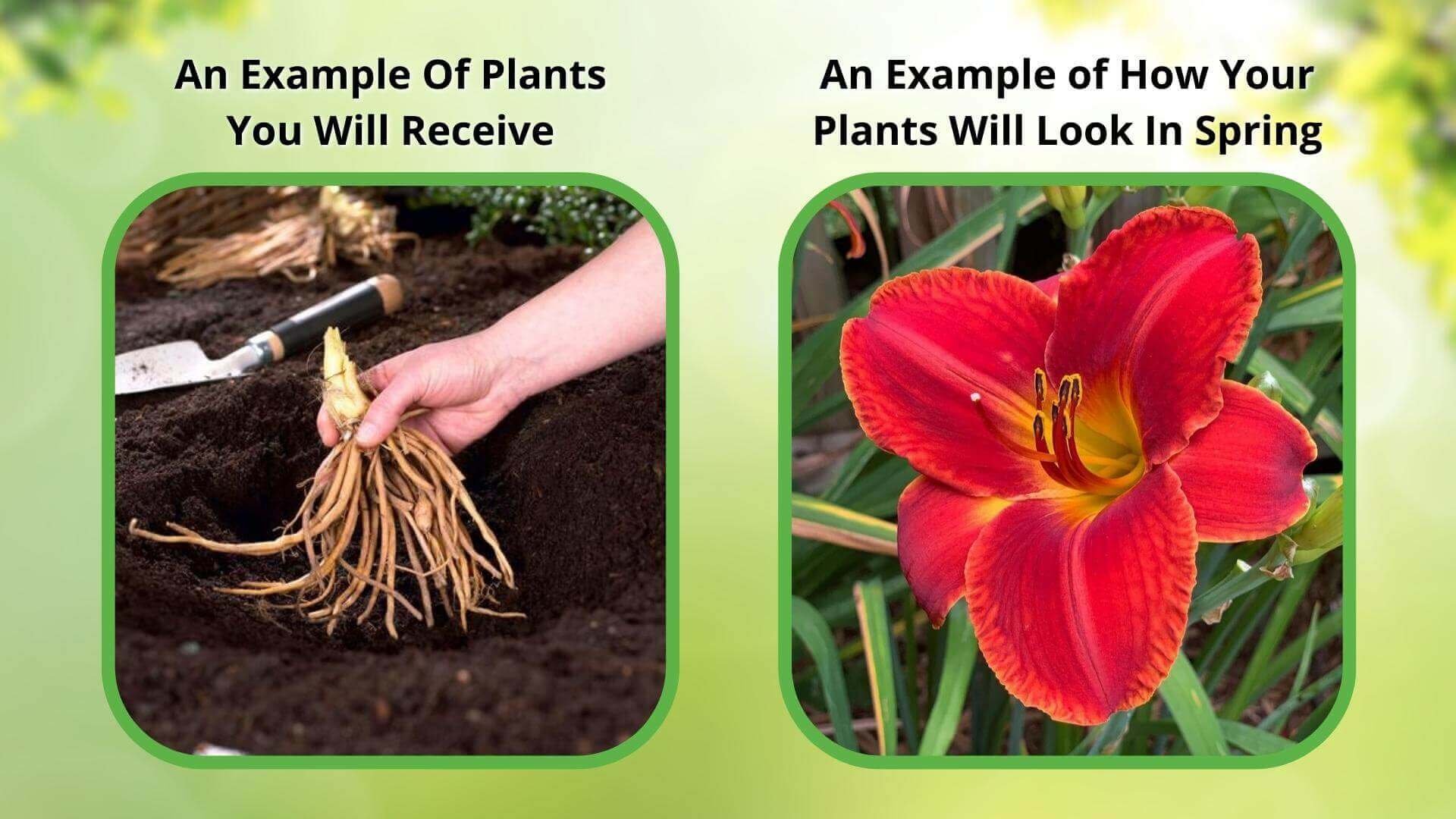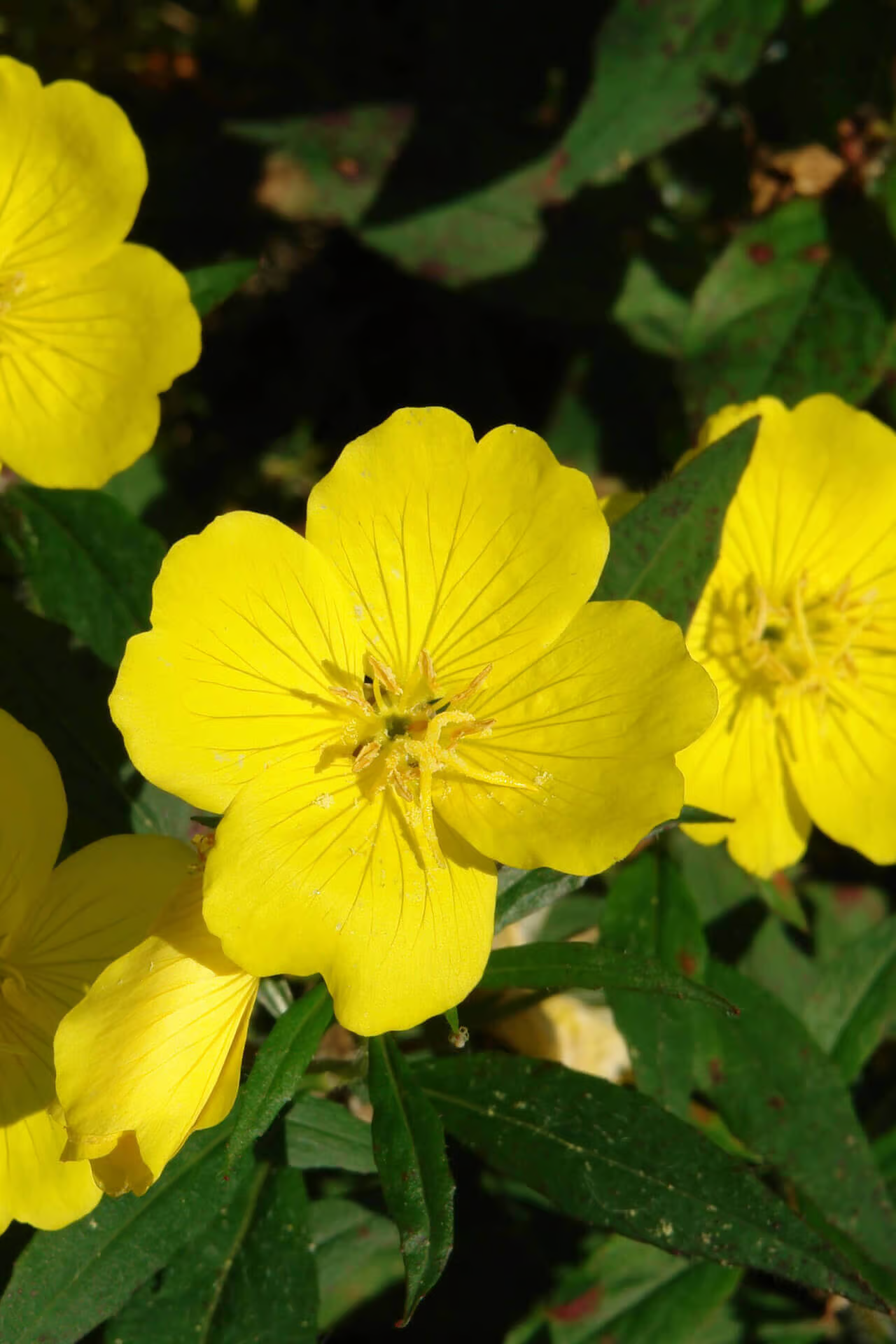
perennial plants
Bright, cheerful blooms all summer long
Enhances garden’s natural beauty effortlessly
Provides ground cover and erosion control
Thrives in
ZONE 3ZONE 4ZONE 5ZONE 6ZONE 7ZONE 8Planting Season:
Year-RoundWhen you add one plant to cart, it automatically adds the second one free on Bogo deals.
Evening Primrose is recognized for their tall stems adorned with bright yellow, four-petaled flowers that typically bloom in the afternoon, contrasted by lance-shaped, green leaves. It is a delightful and beneficial plant with numerous advantages when landscaping. This herbaceous perennial is native to North and South America and has become famous for gardeners due to its striking blooms, versatility, and ecological contributions.
Oenothera biennis is a lovely and prolific North American flower that greatly benefits pollinators in gardens and the wild.
Native to North America, Oenothera biennis is naturalized across the United States. This biennial wildflower grows along forest edges and clearings and can also be found in prairies, marshes, pastures, old mines, railroads, roadsides, and other open, disturbed areas. It is one of the few native plants that bloom into late fall.
Oenothera biennis features clusters of four-petaled, bowl-shaped, two-inch-wide yellow blooms that blossom at the top of the stems. The heart-shaped petals surround eight yellow stamens and a cross-shaped stigma. The plant grows three to five feet tall. Its stiff, purple central stalk is covered in oblong olive-, light-, or medium-green leaves that also form a rosette at the plant's base.
Oenothera biennis is a late-season biennial plant that produces abundant fragrant, lemon-scented blooms from July through October. Its blossoms open in the afternoon, after the sun sets, and close up again in the morning after sunrise.
In the garden, this plant will fit right into a cottage or wildflower garden and add color and texture to borders and flower beds. It can also add beauty to meadows and naturalized areas. This quick-growing flower is best planted in late fall. It will bloom in its second year and self-seed unless it's pruned back at the end of its blooming cycle.
Suppose you want to attract pollinators to your garden, plant Oenothera biennis. Night-flying moths are the plant's chief pollinators, and when the flowers stay open on cloudy mornings, bees, butterflies, and hummingbirds are likely to stop by. Birds will feast on the seeds, and small mammals will nibble on its roots and leaves.
Add Rustic Color With it
If you're looking for an easy way to add rustic color to your landscape and attract more bees, birds, and butterflies, be sure to plant it in your garden. These bright, fragrant plants will bring you joy during the late summer months.
Where does it grow best
The recommended environmental conditions are rich, well-drained, sandy or loamy soil, full-sun to part-shade location.
What Is An Interesting Fact About it
These flowering plants produce bright yellow flowers that open at night when moths pollinate them.
Does it multiply
Yes, it reproduces well through propagation from seeds through self-sowing. Once it has seeded itself, it can self-propagate quite easily, so you get these great colored patches of flowers year after year.
How long does it take for it to germinate
Seeds of this plant take between 10-30 days to germinate when the appropriate environmental conditions are provided.
What Happens To it After Flowering
Evening Primrose seed pods appear after flowering and can be collected or allowed to shed on the ground to self-sow. Most of the plants tend to wither away, but they drop seeds, which sprout out when the next season comes in.

Bloom Season
Spring
Bloom/Foliage Color
Yellow
Height at Maturity
Under 12"
Care
Evening Primrose thrives in well-drained soil and requires regular watering. Trim older flowers to encourage continuous blooming and prevent self-seeding. In spring, fertilize to support robust growth and flowering.
Plant Reproduction
Evening primrose spreads through seeds, underground rhizomes, and runners.
Shipping date depends on the date displayed and chosen when you order from the product's page.
We only accept returns on plants verified dead. If you think your plants have died, we offer a 1 year warranty, please use use this File a Claim Link to verify dead plants and start with return warranty process.





Nighttime Bloomer:
Evening Primrose flowers open at dusk, adding a unique and enchanting element to your garden. Their evening blooms provide a beautiful display when many other flowers have closed for the day.
Vibrant and Varied Colors:
The plant produces a range of colors, from soft pinks to vibrant yellows, creating a striking visual impact. This variety can complement and enhance the overall aesthetic of your garden.
Versatile Landscaping:
Evening Primrose is adaptable to different garden settings, including borders, wildflower meadows, and container gardens. Its versatility makes it an excellent choice for enhancing various landscape designs.
Medicinal Properties:
Evening Primrose is known for its beneficial oil, which is often used in herbal remedies for skin conditions and inflammation. Growing this plant offers both aesthetic and potential health benefits.
Caring Tips
Each box contains detailed care instructions and information about your product. But here's the basics.
Care Tips
Evening Primrose thrives in well-drained soil and requires regular watering. Trim older flowers to encourage continuous blooming and prevent self-seeding. In spring, fertilize to support robust growth and flowering.
Light Requirements
Evening Primrose flourishes in total sun to part shade. It prefers at least 6 hours of direct sunlight daily for optimal growth and flowering. In areas with partial shade, ensure it receives morning sun for the best results.
Hardy Planting Zones
3 • 4 • 5 • 6 • 7 • 8
How often should I water my plants?
How do I know if my plant is getting too much or too little sunlight?
What should I do to prepare my plants for winter?
What are the signs that my plant needs fertilizing?
How can I prevent pests from damaging my plants?
How do I choose the right plant for my climate zone?